WMG News
Sophisticated engineering scanning tech helps archaeologists identify rare ‘ghost coin’
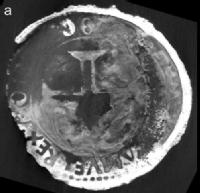 Sophisticated CT scanning technology normally used by researchers from WMG at the University of Warwick to assist high tech manufacturing, has helped uncover the existence of a rare silver coin called an ‘Indio’ discovered by archaeologists investigating a shipwreck off the coast of Oman.
Sophisticated CT scanning technology normally used by researchers from WMG at the University of Warwick to assist high tech manufacturing, has helped uncover the existence of a rare silver coin called an ‘Indio’ discovered by archaeologists investigating a shipwreck off the coast of Oman.
Over 2,800 artefacts were found in the wreck, including a bronze bell with an inscription dating back to 1498, gold coins from the era and an important bronze disc embossed with the "esfera armilar" — a personal emblem of Dom Manuel I, the then-king of Portugal.
WMG Academy Young Engineers Are Given The Tools To Succeed
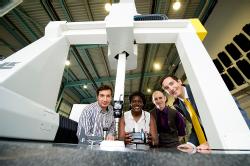 The WMG Academy for Young Engineers in Coventry has received a Coordinate Measuring Machine (CMM) on loan from WMG, at the University of Warwick. The machine will assist students with verification and measurement when producing parts, ensuring they are trained in the most efficient industrial processes and with the same equipment used by world leading manufacturing companies.
The WMG Academy for Young Engineers in Coventry has received a Coordinate Measuring Machine (CMM) on loan from WMG, at the University of Warwick. The machine will assist students with verification and measurement when producing parts, ensuring they are trained in the most efficient industrial processes and with the same equipment used by world leading manufacturing companies.
Warwick Researchers Help Reconstructing the Michelangelo Bronzes
En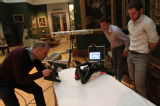 gineers and imagers from the University of Warwick’s WMG and anatomists from Warwick Medical School at the University of Warwick are helping art historians from the University of Cambridge have been working together to try to understand how the two mysterious Renaissance bronzes were made and why they look the way they do by making accurate replicas of the originals. The latest technology-neutron imaging, XRF analysis, 360 degree laser scanning, 3D printing, and real-time x-ray videography - has been involved in this Renaissance ‘whodunnit’.
gineers and imagers from the University of Warwick’s WMG and anatomists from Warwick Medical School at the University of Warwick are helping art historians from the University of Cambridge have been working together to try to understand how the two mysterious Renaissance bronzes were made and why they look the way they do by making accurate replicas of the originals. The latest technology-neutron imaging, XRF analysis, 360 degree laser scanning, 3D printing, and real-time x-ray videography - has been involved in this Renaissance ‘whodunnit’.
Warwick experts help West Midlands Police convict killers
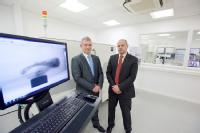 Unique collaboration sees cutting edge research used to prove murder cases
Unique collaboration sees cutting edge research used to prove murder cases
Futuristic 3D scanning technology at WMG, University of Warwick is helping West Midlands Police to convict killers thanks to a pioneering new partnership which is providing juries with microscopic evidence previously beyond the reach of forensic testing.
Last month, Lorenzo Simon was sentenced to life in prison for the barbaric murder of a housemate whose body he dissected and stuffed inside suitcases he later hurled into Birmingham Canal, with help from his girlfriend Michelle Bird.
Crucially detectives recovered part of the victim’s humerus from an oil drum in the couple’s garden – used as a furnace to destroy evidence – which experts from WMG, at the University of Warwick, proved was a seamless fit with a limb found in the case.
WMG helps to shed new light on ‘The Real Noah’s Ark ‘
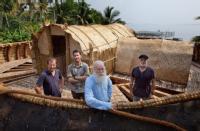
Researchers at WMG, University of Warwick, used 3D scanning and visualisation technology to help Dr Irving Finkel, the world’s foremost expert on ancient Babylonian languages, decipher a 4000-year-old tablet that sheds new light on the iconic biblical tale of Noah's Ark.
‘The Real Noah’s Ark’, shown on Channel 4, Sunday 14th September, documented the astonishing story of this significant find and Dr Finkel’s incredible journey of discovery. The ancient clay tablet, discovered on a mantelpiece in a UK suburban home and handed to the British Museum, is inscribed with the world's oldest language, cuneiform. It tells the story of a Noah-like figure and a great flood, giving detailed instructions on how to build an ark. However, due to its incredible age and some understandable wear and tear, parts of the tablet are difficult to read.
Having spent 20 years translating the tablet Dr Finkel, Assistant Keeper of Ancient Mesopotamian Scripts, Languages and Cultures at the British Museum, set out to show that the biblical narrative originated from stories that had been embedded in Sumerian and Babylonian society and literature for thousands of years. He also cast new light on the shape of the ark, believing that it was round; closer in style to ancient coracles than the traditional long seafaring boat of popular imagination. After all, it didn’t necessarily need to sail anywhere, it just needed to float until the floodwater retreated.
WMG’s Professor Mark Williams assisted Dr Finkel with his detailed interpretation of the tablet by scanning it using cutting edge X-ray Micro-CT and 3D Laser Scanning technology, and projecting the image onto the UK’s highest resolution 3D power wall. The immersive technology allowed Dr Finkel to view the tablet from all angles and in high definition, revealing previously undecipherable characters and confirming his suspicions that the vessel being described was indeed round.
Teenager aims for repeat of electric racing car victory with help of WMG 3D scanning
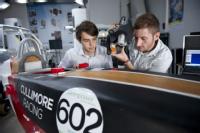 A 19-year old electric racing car engineer whose design triumphed in the national Greenpower race finals is using WMG’s 3D scanning expertise to build an even faster version for next year’s competition.
A 19-year old electric racing car engineer whose design triumphed in the national Greenpower race finals is using WMG’s 3D scanning expertise to build an even faster version for next year’s competition.
The Greenpower Electric Car challenge – sponsored by Siemens – supports the teaching and learning of Science, Technology, Engineering, and Mathematics (STEM) at all levels of education, from primary schools through to universities. Teams of students design, build, and race single seat electric cars and compete in regional heats up and down the UK culminating in the nation finals held every year at the famous Goodwood Motor Racing Circuit.
Last year’s national final winner in the Formula 24+ category , which covers car designers between the age of 16 and 25, was Dave Cullimore from Cheltenham, who beat off stiff competition from 21 other teams from all over the UK.
Although many of his rivals made use of computer-assisted design techniques, virtual wind tunnels and the latest lightweight materials such as carbon fibre, Dave triumphed despite a more modest approach.
Midlands pupils first to see virtual reality recreation of Lunt Fort as it was in Roman times
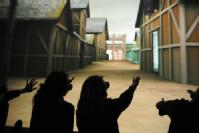 A group of schoolchildren from Coventry’s Westwood Academy have become the first members of the public to see a specially commissioned 3D Virtual Reality model of Warwickshire’s Lunt Fort.
A group of schoolchildren from Coventry’s Westwood Academy have become the first members of the public to see a specially commissioned 3D Virtual Reality model of Warwickshire’s Lunt Fort.
They were invited to WMG to see how the fort would have looked during the height of use by Roman soldiers between 60 and 80AD.
Scientists bring 2000-year-old painted warrior to life
A 2000-year-old painted statue is being restored to her original glory by scientists from WMG at the University of Warwick, the University of Southampton, and the Herculaneum Conservation Project.
WMG classic car research sparks interest
Work to find new ways to breathe life into priceless motors has caught the interest of one of the 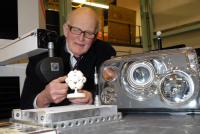 industry’s stalwarts. Researchers at WMG, the innovative solutions provider at the University of Warwick, have been looking at how lasers might be used to help restore classic cars. They’re working with Coventry Transport Museum who loaned the university department a priceless Lea Francis Hyper racing car as a test model. After reading about the ground-breaking work, the Managing Director of Lea Francis Cars Ltd – still very much a going concern - contacted WMG to share his own experience of building the thoroughbred cars.
industry’s stalwarts. Researchers at WMG, the innovative solutions provider at the University of Warwick, have been looking at how lasers might be used to help restore classic cars. They’re working with Coventry Transport Museum who loaned the university department a priceless Lea Francis Hyper racing car as a test model. After reading about the ground-breaking work, the Managing Director of Lea Francis Cars Ltd – still very much a going concern - contacted WMG to share his own experience of building the thoroughbred cars.
State of the art scanner gives new life to classic cars
STATE-OF-THE ART SCANNER GIVES NEW LIFE TO CLASSIC CARS**TUESDAY 13 NOVEMBER  ** Britain has a unique motoring heritage – most of it preserved in museums – but researchers at WMG are to use high-technology to breathe new life into our classic autos. WMG’s Craftsmanship team, based at the University of Warwick, have recently installed a £350,000 laser measurement machine, supplied by Metris UK, that can accurately measure – to the nearest micron – anything from the smallest component up to full size cars. And on Tuesday 13 November they will demonstrate this technology by laser scanning a priceless Lea Francis Hyper – winner of the 1928 Ulster TT race – to develop a unique computer model of the car.
** Britain has a unique motoring heritage – most of it preserved in museums – but researchers at WMG are to use high-technology to breathe new life into our classic autos. WMG’s Craftsmanship team, based at the University of Warwick, have recently installed a £350,000 laser measurement machine, supplied by Metris UK, that can accurately measure – to the nearest micron – anything from the smallest component up to full size cars. And on Tuesday 13 November they will demonstrate this technology by laser scanning a priceless Lea Francis Hyper – winner of the 1928 Ulster TT race – to develop a unique computer model of the car.
